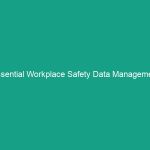Introduction
Good morning team! Today, we’re diving into an essential topic that affects each one of us in our daily work: arc flash Hazards. Understanding these Hazards is crucial because they pose significant risks in our high-voltage environments. By the end of this Toolbox Talk, you will have a clearer picture of what arc flash is, the dangers it presents, and how we can protect ourselves and our coworkers.
Understanding Arc Flash Hazards
So, what exactly are arc flash hazards? An arc flash is essentially a form of electrical explosion that occurs when an electrical current passes through air between ungrounded conductive parts or a conductive part and the ground. This can result in severe injuries, including Burns, hearing loss, or even death.
The importance of understanding arc flash hazards cannot be overstated. Every year, thousands of workers are injured due to electrical incidents, and many of these injuries are preventable. Misconceptions often arise, such as the belief that only high-voltage technicians are at risk. However, this is not the case—anyone working near electrical equipment is potentially in danger.
Key Hazards, Risks, and Safety Considerations
Let’s discuss some specific hazards and risks associated with arc flashes:
- Inadequate Personal Protective Equipment (PPE): Not wearing appropriate PPE can lead to severe injuries. Always ensure you’re equipped with flame-resistant clothing, face shields, and gloves.
- Improper Work Practices: Failing to follow Safety protocols when working on or near energized equipment can increase the risk of an arc flash.
- Electrical Equipment Maintenance: Poorly maintained equipment can malfunction, leading to increased chances of arc flash incidents.
The real-world consequences of ignoring these safety protocols are severe. For instance, a worker may suffer third-degree burns from an arc flash, resulting in prolonged recovery times and significant medical costs, not to mention the emotional toll on the individual and their family.
Best Practices, Procedures, & Actionable Advice
To mitigate the risks associated with arc flash hazards, here are some Best Practices you should follow:
- Conduct Risk Assessments: Regular evaluations of the electrical systems can help identify potential hazards and ensure proper Safety Measures are in place.
- Use Proper Lockout/Tagout Procedures: Always ensure that equipment is properly shut down and locked out before maintenance. This prevents accidental energization.
- Wear Appropriate PPE: Always wear the correct level of PPE for the task you are performing. This can significantly reduce the risk of injury.
- Training and Awareness: Regularly participate in Training sessions to stay updated on Electrical Safety protocols and arc flash hazards.
Let’s look at a real-world incident to illustrate the importance of these practices. In one case, a technician was performing maintenance work without proper PPE and was exposed to an arc flash. The incident resulted in severe burns and a long recovery period. This could have been avoided with proper Safety Measures and adherence to protocols.
Regulations, Standards, and Compliance
It’s important to be aware of the Regulations that govern electrical safety, including:
- OSHA Standards: The Occupational Safety and Health Administration provides guidelines to ensure safe working conditions.
- NFPA 70E: This standard specifically addresses electrical safety in the workplace and outlines the requirements for work practices and PPE.
Compliance with these regulations is not just a legal obligation but a critical component of ensuring your safety and the safety of your coworkers. Non-compliance can lead to serious accidents and legal repercussions for the organization.
Employee Engagement & Discussion
Now, let’s open the floor for discussion. I’d like to hear from you:
- What safety challenges have you encountered related to arc flash hazards?
- Have you ever witnessed or experienced an incident due to lack of safety measures?
- What steps do you think we could take to improve our safety practices regarding electrical work?
Your insights are invaluable, and sharing your experiences can help us all learn and improve our safety culture.
Conclusion & Key Takeaways
In closing, we’ve discussed the importance of understanding arc flash hazards and the risks they pose in our workplace. Remember, adhering to safety protocols and using the appropriate PPE can significantly reduce the risk of electrical accidents.
Let’s prioritize safety in our daily operations, ensuring that we all return home safely each day. Thank you for your attention and commitment to maintaining a safe working Environment!


